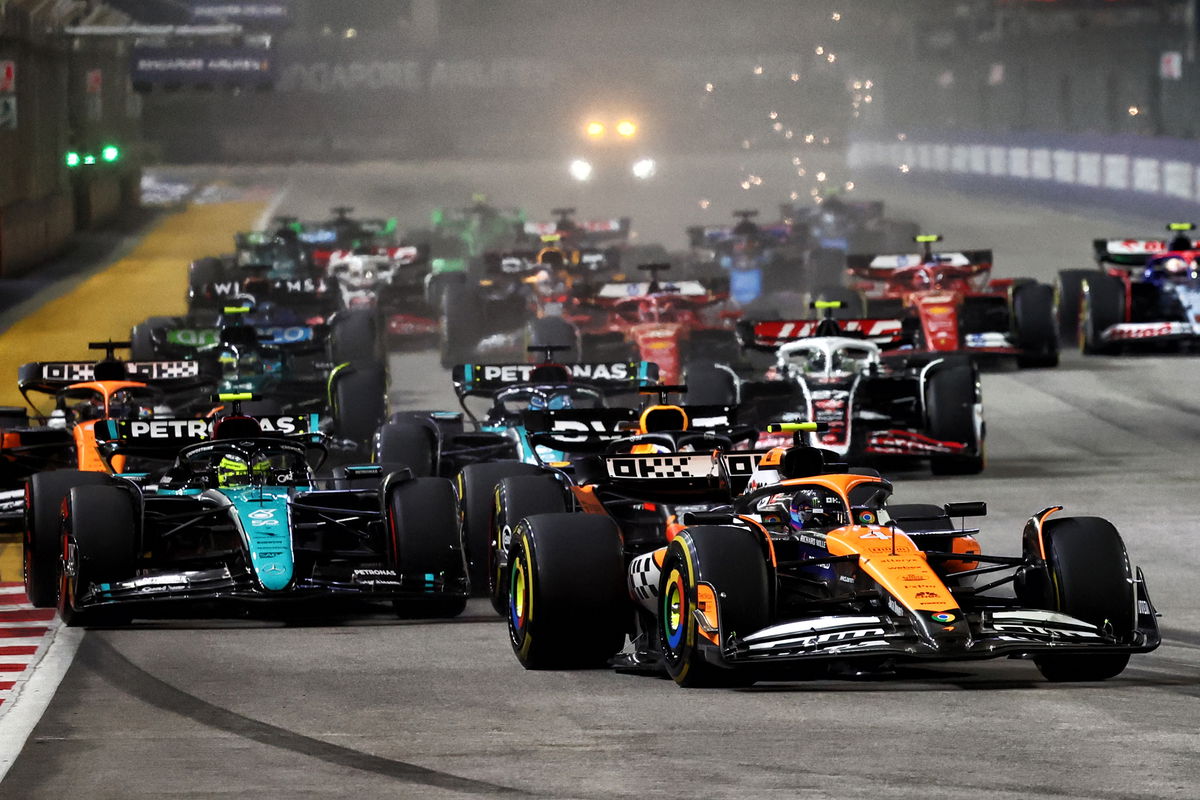

Seven of the 10 teams are based out of the United Kingdom, though eight of them have a presence in and around ‘Motorsport Valley’ with only Ferrari and Sauber absent.
While registered in the United States, Haas has an operation base in Banbury where it prepares its cars – a facility once used by the Manor F1 team.
RB also has an office in Milton Keynes, formerly Bicester, as part of its relationship with Red Bull Racing. It is a small facility for now, but the squad intends to grow its presence there as it attracts new staff.
By contrast, seven teams are wholly based in the UK, with their accounts publicly available.
With all filings now submitted for the 2023 calendar year, it highlighted an improved financial position across the board for the seven teams (plus Haas’ UK operation).
Compared to 2022, turnover increased by 15 percent last year, with teams AUD $519,000 (£268,000) on average in the black.
It’s a notable improvement from a year prior when the average loss was AUD $1.3 million (£679,000).
Those figures should be taken with some salt as Aston Martin and Williams continue to invest.
Aston Martin experienced a loss of almost AUD $50 million (£25.3m) while Williams lost over AUD $160 million (£84.3m).
Excluding those two teams, the financial position transformed to an average profit of AUD $43.2 million.
The 15 percent increase in particular is a positive as prize money payments increased by only nine percent year on year.
That points to increased income through alternate revenue streams, namely sponsorship.
Haas, for instance, welcomed a new title sponsor for 2023 in MoneyGram, thought to be worth AUD $30 million annually.
It is worth noting that McLaren’s results significantly impact the average reversal as its investment and one-time costs in 2022 were not present on its 2023 balance sheet.
That saw its post-tax position improve from a AUD $111.9 million (£57.8m) loss to a AUD $25 million (£12.9m) profit – even turnover improved by over AUD $200 million.
The key, however, is that, on balance, the UK-based teams posted financially healthy results, which speaks positively to the changes made to the championship’s financial underpinnings.
Changes made in recent years have helped stabilise teams’ underlying businesses with financial regulations now limiting what teams can spend both operationally and in terms of capital expenditure.
There have also been changes to the payment of prize money, with a more equitable split from front to back under the most recent commercial Concorde Agreement.
Coupled with strong fan interest in the sport, leading to new sponsors being attracted to F1, it leaves teams in a vastly stronger position than they once were.
| 2023 | 2022 | |||
| Revenue | Profit/Loss | Revenue | Profit/Loss | |
| Red Bull Racing | £ 307,472,000.00 | £ 1,296,000.00 | £ 278,026,000.00 | £ 2,057,000.00 |
| McLaren | £ 431,082,000.00 | £ 12,919,000.00 | £ 327,892,000.00 | -£ 57,840,000.00 |
| Aston Martin | £ 260,099,000.00 | -£ 25,272,000.00 | £ 187,728,000.00 | -£ 52,915,000.00 |
| Williams | £ 126,965,000.00 | -£ 84,286,000.00 | £ 142,846,000.00 | -£ 17,894,000.00 |
| Mercedes | £ 546,450,000.00 | £ 83,846,000.00 | £ 474,558,000.00 | £ 89,744,000.00 |
| Alpine | £ 250,014,000.00 | £ 7,752,000.00 | £ 249,038,000.00 | £ 26,214,000.00 |
| (Haas) | £ 113,434,000.00 | £ 5,627,000.00 | £ 109,716,000.00 | £ 5,883,000.00 |





















Discussion about this post